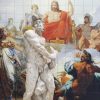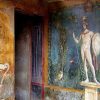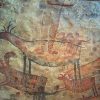Greek Painting – History of Murals, Characteristics and Advantages
What is Greek Painting? Greek Painting has survived mainly as ceramic decoration. The few surviving Greek murals are remarkable. However, it shows important advances in techniques of realism (shading and perspective). Likewise, the heart of Greek culture (of painting) was Athens. This is true even at the time of Greek obscurantism, during which Athens (like… read more »








